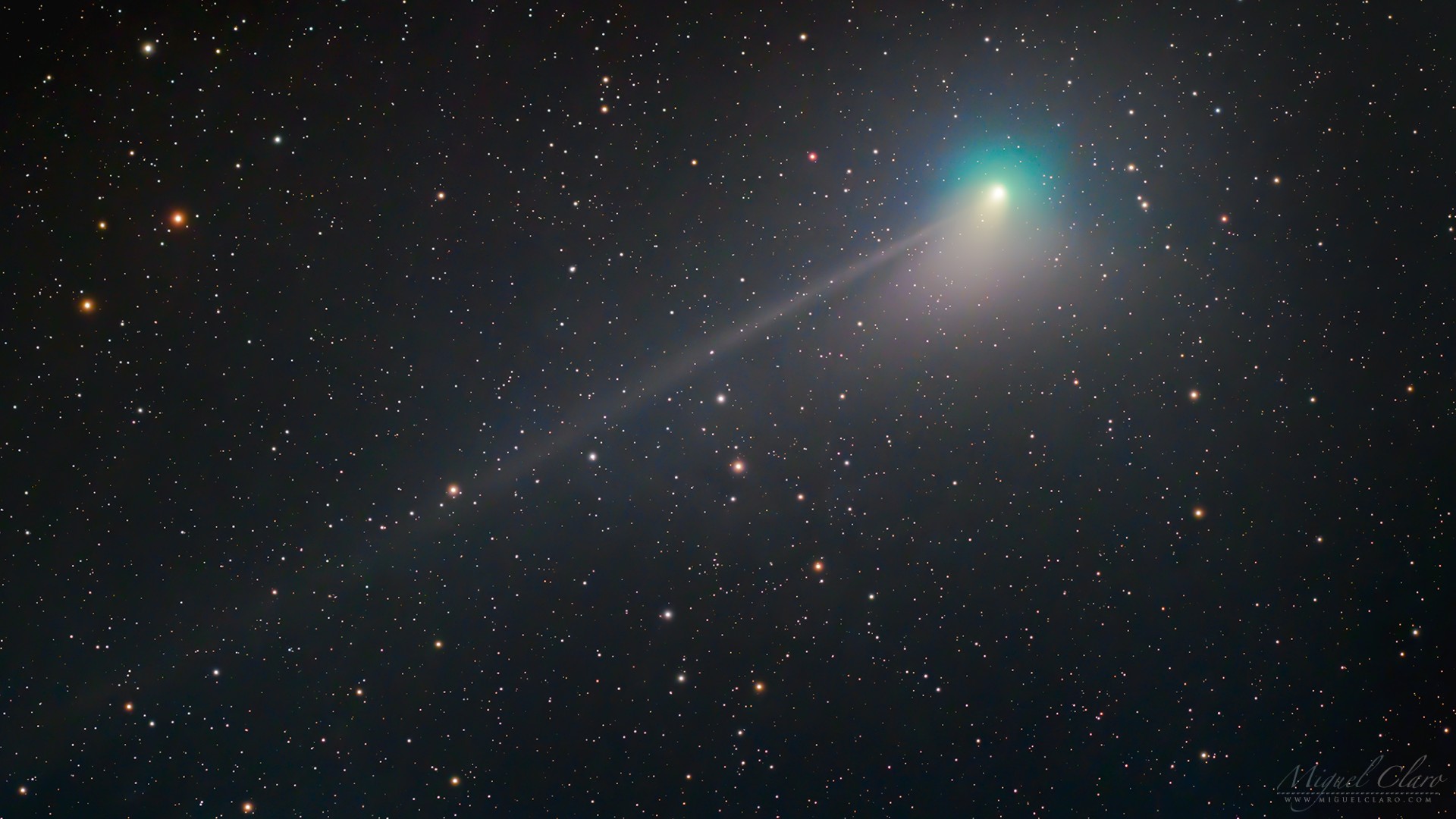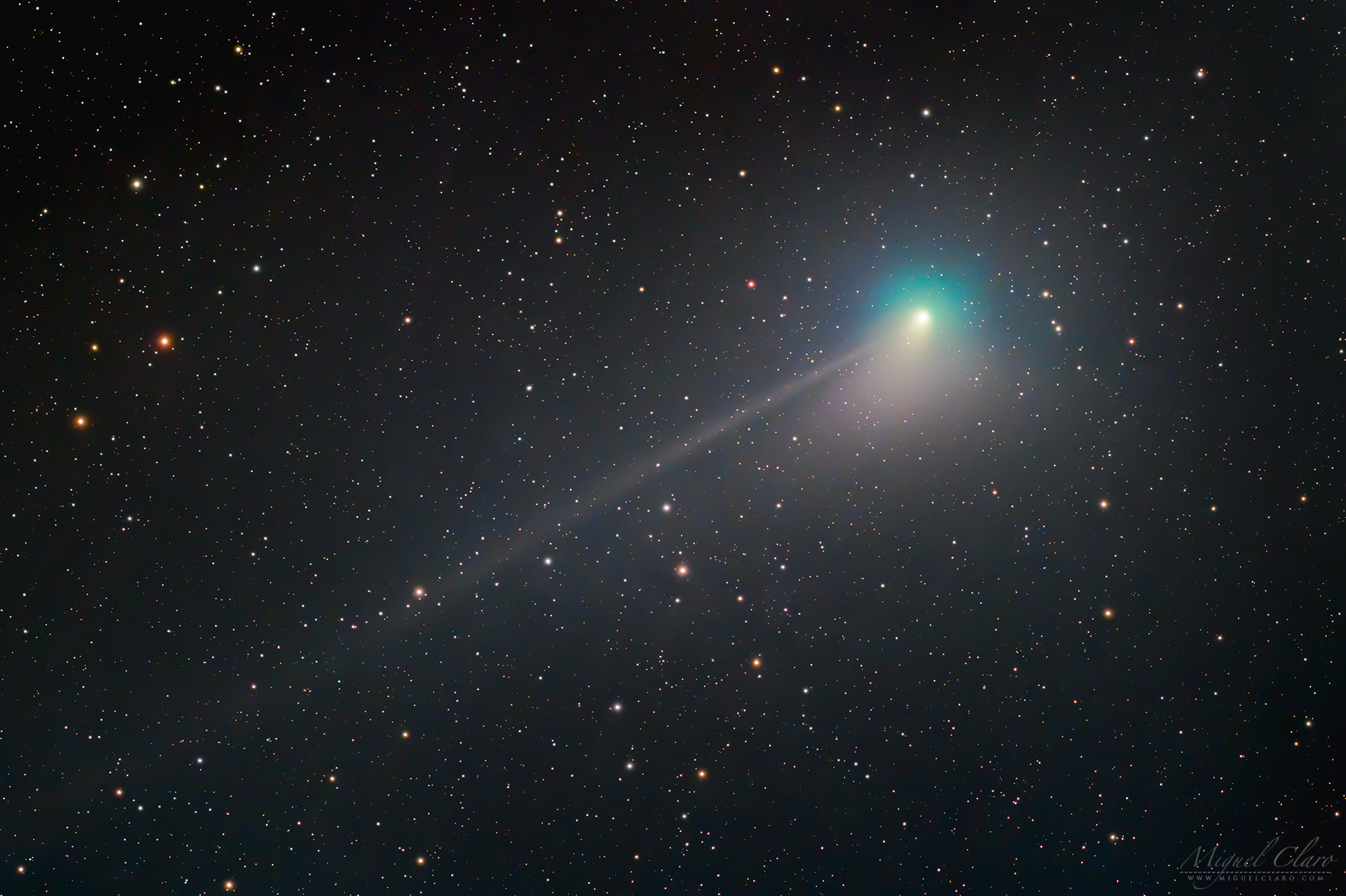Comet C/2022 E3 (ZTF) shines bright while closest to the sun in gorgeous photo
Comet C/2022 E3 (ZTF) is proving to be photogenic.

Miguel Claro is a professional photographer, author and science communicator based in Lisbon, Portugal, who creates spectacular images of the night sky. As a European Southern Observatory Photo Ambassador and member of The World At Night and the official astrophotographer of the Dark Sky Alqueva Reserve, he specializes in astronomical "Skyscapes" that connect both Earth and night sky. Join Miguel here as he takes us through his photograph "Comet C/2022 E3 (ZTF) during Perihelion Revealing a Glowing Greenish Coma and Long Ion Tail."
The image shows a close-up view of comet C/2022 E3 (ZTF) during perihelion, when it was at its closest to the sun on Jan. 12, 2023.
This photograph feature's the comet's wonderful greenish coma from glowing carbon gas and a long tail produced by the ions ejected from the icy comet's nucleus.
Comet C/2022 E3 (ZTF) was photographed late in the night at a distance of 108 million km [67 million miles] from Dark Sky Alqueva Observatory in Portugal, two hours before the start of the astronomical twilight.
Related: How to see the green comet C/2022 E3 (ZTF) visible in the night sky now as it approaches Earth


Looking for a telescope to see comet C/2022 E3 ZTF? We recommend the Celestron Astro Fi 102 as the top pick in our best beginner's telescope guide.
This long distance traveler not seen in 50,000 years is moving fast against the background starry sky, and on the night the photograph was taken it was located between the constellations of Hercules, Corona Borealis and Bootes, showing a faint visual magnitude of +7.3.
Although the comet will be in the closest point to our planet on Feb. 1 (known as perigee) and eventually until then could reach a naked eye magnitude, these kinds of objects are pretty unpredictable and we never know what surprises might be waiting for us.
Get the Space.com Newsletter
Breaking space news, the latest updates on rocket launches, skywatching events and more!
For capturing this image, I used a Takahashi FSQ-106ED telescope at F/5 on an EM200 mount, auto-guided with a Asiair Pro wifi camera controller. Attached to this I had a modified Nikon D850 DSLR camera, which was set to ISO2500.
I took several sub-exposures of 180 seconds for a total of 29 images which then were combined for a total integration time of 87 minutes (or around 1.5 hours). Image processing was done on PixInsight 1.8.9-1 and Photoshop CC 2023 software. All of the images were captured from Cumeada Observatory in Dark Sky Alqueva Reserve, Reguengos de Monsaraz, Portugal.
Want to see comet C/2022 E3 (ZTF) up close or try your hand at taking your own photos? Be sure to see our guides on the best telescopes and best binoculars that can help. Don't forget to also check out our guides on how to view and photograph comets, as well our best cameras for astrophotography and best lenses for astrophotography to get started.
To see more of Miguel Claro's work, please see his website or follow his stories on Instagram at www.instagram.com/miguel_claro.
Editor's Note: If you snap your own gorgeous photos of comet C/2022 E3 (ZTF) and would like to share them with Space.com’s readers, send your photo(s), comments, and your name and location to spacephotos@space.com.
Follow us @Spacedotcom, or on Facebook and Instagram.
Join our Space Forums to keep talking space on the latest missions, night sky and more! And if you have a news tip, correction or comment, let us know at: community@space.com.
-
rod Some great pictures here and the telescope used is great too! For others who live in more light polluted areas, their experiences were less than thrilling when viewing the comet. https://forums.space.com/threads/how-to-see-green-comet-c-2022-e3-ztf-as-it-approaches-earth.59705/Reply
Great telescopes and very dark sky sites are needed, glad for this report by space.com and the images taken from sites like that.









